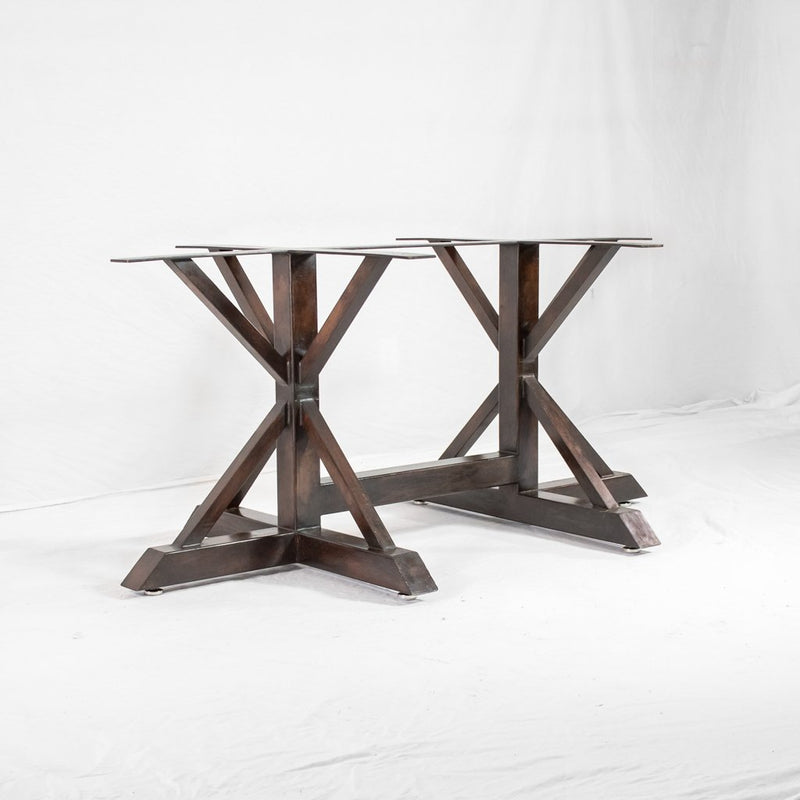From Standard to Modern: Discover the Perfect Eating Space Table Legs for Your Style
While traditional layouts such as cabriole and turned legs evoke a sense of timeless elegance, modern styles like barrette and geometric alternatives provide an opportunity for striking aesthetic passion. As you take into consideration these components, the inquiry remains: just how can you flawlessly incorporate these varied leg styles to develop an unified eating experience?
Recognizing Table Leg Styles
The selection of dining-room table leg styles can dramatically affect both the visual appeals and performance of the space. Each leg design contributes distinct aesthetic aspects and functional features, satisfying diverse layout preferences and usage needs. Recognizing these designs is critical for picking the appropriate eating table that straightens with your total interior layout vision.
As an example, conical legs supply a clean, traditional look that can enhance a space's elegance, while stand bases supply stability and maximize legroom, making them optimal for smaller sized rooms. Barrette legs, a characteristic of mid-century modern-day design, introduce an industrial style, enabling a ventilated, open feel. Trestle legs stimulate rustic beauty, offering robust assistance and a feeling of eternity.
Wooden legs can bring warmth and texture, whereas metal options commonly convey a smooth, modern vibe. Eventually, comprehending table leg designs is important for creating a cohesive dining location that reflects individual style while making certain practicality and convenience.
Typical Table Leg Options
When picking dining-room table legs, conventional alternatives usually embody timeless style and workmanship. These styles mirror an abundant heritage and a dedication to top quality, making them suitable for those that appreciate classic aesthetics.
Among one of the most iconic typical leg designs is the cabriole leg, identified by its graceful rounded shape. This style frequently features decorative carvings and is most generally located in Queen Anne and Chippendale furnishings. One more prominent option is the turned leg, which flaunts a collection of smooth, rounded shapes that give a traditional appearance while preserving security.
Additionally, the straight leg, while simple, offers a sturdy and basic framework that can blend perfectly with a variety of tabletop designs. For those drawn to ornate describing, claw-and-ball feet legs stimulate a feeling of majesty and can act as a magnificent centerpiece in any type of dining space.
Last but not least, pedestal bases, although not strictly legs, give an alternate conventional choice that permits sufficient legroom and can be wonderfully carved. Each of these standard leg styles adds to the general setting of an eating space, weding feature with aesthetic allure.

Modern Table Leg Designs
Modern table leg styles offer a diverse series of styles that stress ingenious products and clean lines. These styles often prioritize performance while functioning as striking centerpieces within a dining room. Minimal visual appeals are common, with legs crafted from products such as steel, glass, and engineered timber, which contribute to a ventilated and modern feeling.
One preferred layout is the barrette leg, defined by its slender, conical structure that supplies stability without frustrating the table top (dining room table legs). This design is frequently located in mid-century contemporary furnishings and can effortlessly enhance various eating table forms. Another fad is using geometric forms, where legs might handle angular or asymmetrical forms, adding visual passion and a touch of creativity

Mixing Designs for One-of-a-kind Spaces
Typically, house owners seek to create special dining spaces that reflect their personal style by blending various design components. This technique allows for the unification of varied appearances, causing an unified yet unique setting. Coupling a rustic wooden table with streamlined, modern steel legs can develop an eye-catching contrast that boosts the space's total appeal.
Additionally, integrating vintage table legs with modern table tops can stimulate a feeling of history while maintaining a contemporary perceptiveness. Such mixes not only display individual preference however additionally encourage imagination, permitting homeowners to curate a room that feels both personal and inviting.
Color plays a crucial duty in this mixing procedure; picking table legs that enhance or comparison with the existing color Get More Info design can improve aesthetic rate of interest. Whitewashed legs can soften the daring of a dark table surface, creating a balanced aesthetic.
Tips for Selecting the Right Legs
Choosing the right table legs is essential for attaining both capability and visual allure in your eating area. Begin by taking into consideration the total design of your area. link Conventional setups take advantage of legs that feature elaborate makings or turned layouts, while modern spaces may ask for streamlined, minimal styles.
Next, assess the elevation and security of the legs. dining room table legs. Common table range in between 28 to 30 inches in height, so make certain the legs complement this measurement for convenience. In addition, robust products, such as hardwood or steel, can enhance security and longevity
Assess the leg shape also-- options include straight, tapered, or stand styles. Straight legs supply a classic look, while tapered legs can include a touch of beauty. Pedestal bases offer sufficient legroom and are excellent for smaller sized areas.
Verdict
In recap, choosing the optimal eating space table legs needs careful factor to consider of both conventional and contemporary designs. By balancing leg style, height, and product with the general design, a natural and inviting atmosphere can be attained.
The range of eating room table leg designs can dramatically affect both the aesthetics and performance of the room. Inevitably, recognizing table leg Homepage styles is vital for creating a cohesive eating location that reflects individual design while guaranteeing usefulness and comfort.One of the most famous standard leg designs is the cabriole leg, identified by its stylish bent form. Straight legs provide a timeless look, while tapered legs can include a touch of style.In recap, selecting the suitable eating space table legs requires careful consideration of both modern and traditional designs.